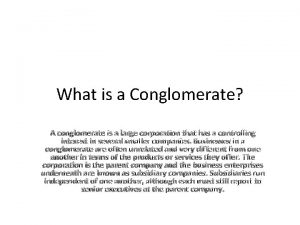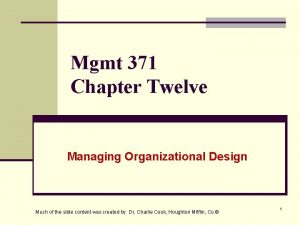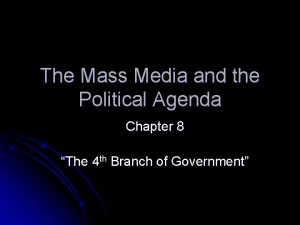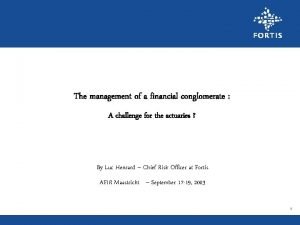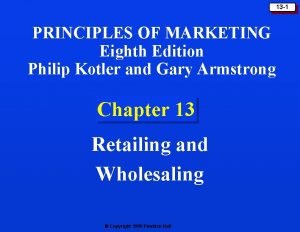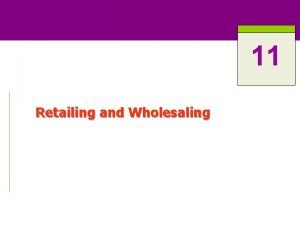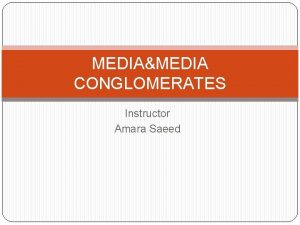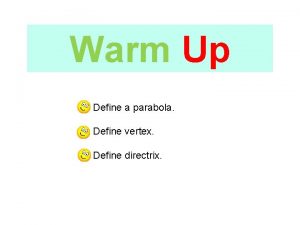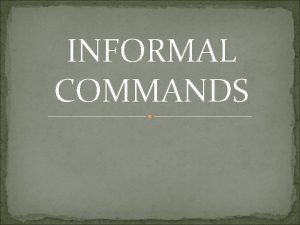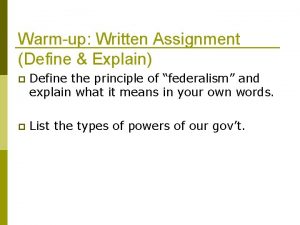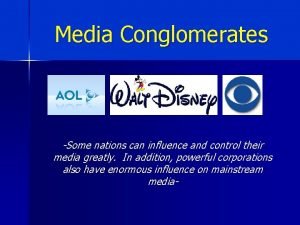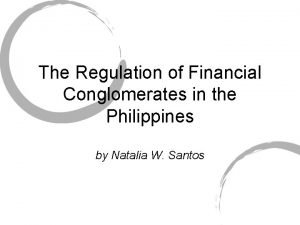Warm up Define Conglomerate Explain why conglomerates use























- Slides: 23

Warm - up Define Conglomerate. Explain why conglomerates use diversification.

Savings and the Financial System

Saving For an economic system to grow it must produce capital goods to have production. To produce capital people must be willing to Save. Saving - the absence of spending Savings - the dollars that become available when people abstain from consumption.


Saving ● When people save they make funds available to others. ● Businesses can borrow money from the bank and use for capital goods, which increases production and jobs. This causes growth. ● The more that people save the more banks have to loan or let people borrow to start businesses or grow businesses.

Financial System For people to use the savings of others, the economy must have a financial system- a network of savers, investors and financial institutions that work together to transfer savings to investors. Financial Assets - claims on the property and the income of a the borrower. They specify the amount loaned and the terms of the loan.

The Circular Flow of Funds SURPLUS FUNDS Financial Intermediaries SAVERS Households Businesses ● ● ● ● ● Commercial Banks Savings and Loan Associations Savings Banks Mutual Savings Banks Credit Unions Life Insurance companies Mutual Funds Pension Funds Real Estate Investment Trusts Finance Companies BORROWERS Governments Businesses FINANCIAL ASSETS

Non - Bank Intermediaries Look up the following words and write your own definition for each. 1. Finance Company Bill Consolidation Loan 2. Life Insurance Company Premium 3. Mutual Funds NAV - net asset value 4. Pension Funds Pension 5. Real Estate Investment Trusts (REIT)

Investment Strategies and Financial Assets Basic Investment Considerations 1. Risk -Return Relationship - Risk is a situation in which the outcome is not certain but probabilities can be estimated. The more risky an investment is the greater the reward. Example: there is less risk but also less return on investment in a CD then there is in a common stock or junk bonds.

Investment Strategies and Financial Assets 2. Investment Objectives - consider reason for investing. Are you saving for retirement? Are you needing fast cash? Whatever the case determining your goal will guide you into your type of investment. 3. Simplicity - Invest in what you know. Rule#1 - if an investment seems too complicated, then ignore it. Rule#2 - If an investment is too good to be true it probably is.

Investment Strategies and Financial Assets 4. Consistency - most successful investors invest consistently over long periods of time. 5. 401 (k) Plans - a tax deferred investment and savings plan that acts as a personal pension fund for employees.

Warm Up Define the Financial System in your own words. How does the flow of funds work between Savers and Borrowers?

Bonds Bond - When government or firms need to borrow funds for long period, they often issue bonds. Bonds are long-term obligations that pay a stated rate of interest for a specified number of years.

Financial Assets CD’s (Certificates of Deposit) Corporate Bonds Municipal Bonds Government Savings Bonds Treasury Notes Treasury Bonds Treasury Bills Individual Retirement Accounts Roth IRA

Markets for Financial Assets Capital Markets - Market where money is loaned for more than one year. Money Market - Market where money is loanded for less than a year. Primary Market - market where only the original issuer can repurchase or redeem a financial asset. Secondary Market - a market in which existing financial assets can be resold to new owners.

Investing in equities, futures, and options Equities - Stocks that represent ownership in corporations. Many things influence the price of equities: ● Number of shares to be traded ● Some companies are profitable; others are not ● Expectations or prospects for growth Efficient Market Hypothesis (EMH) - States that stocks are usually priced accurately.

http: //youtu. be/Gn. JCOof 2 HJk

Stocks Portfolio diversification - popular practice of holding a large number of different stocks so that increases in some can offset unexpected declines in others. Stockbrocker - a person who buys or sells equities for clients. Securities exchanges - places where buyers and sellers meet to trade securities.

Organized stock exchanges NYSE New York Stock Exchange The American Stock Exchange NASDAQ - National Association of Securities Dealers Automated Quotation Indexes Dow Jones S&P 500 NASDAQ 100

Assignment 1. Look up the website for the NYSE, AMEX, or NASDAQ. 2. Explore the website 3. Find 10 firms that interest you and write down the following: Abbreviation Current Price How much % increase Summary of past 6 months trend. 5. Calculate the sum of all 10 of your chosen stocks 4. Look up the S&P 500 and the Dow Jones 5. How does your 10 stocks compare to both?

Bull vs Bear Markets Bull Market - A strong market with prices moving up for several months or years Bear Market - a “mean” market with prices moving down sharply for several months or years in a row. Put option - contract giving investor the option to sell equities at a specific future date using price agreed upon today. Call option - contract giving investors the option to buy equities at a specific future date using a price agreed upon today.

Review Money Markets Junk bonds AMEX NYSE S&P 500 Non Bank Financial Intermediaries Risk Return Relationships Futures Market Bonds Mutual Funds Treasury Bill NASDAQ OTC Dow Jones Horizontal and Vertical mergers Common stock Corporation

Sole Proprietorship Dividends Chamber of Commerce Preferred Stocks Limited Liability Partnership Cooperatives Labor Unions Diversification Divison of Labor Profit motive Put option Call option
 Why why why why
Why why why why What is a conglomerate?
What is a conglomerate? Matrix supported conglomerate
Matrix supported conglomerate Merger vs acquisition
Merger vs acquisition Detrital
Detrital Conglomerate industry
Conglomerate industry Proses terbentuknya batuan sedimen
Proses terbentuknya batuan sedimen Marble rock foliated
Marble rock foliated Blank brothers us entertainment conglomerate
Blank brothers us entertainment conglomerate Conglomerate h form design
Conglomerate h form design Tropic thunder budget and gross
Tropic thunder budget and gross Mass media conglomerate
Mass media conglomerate Financial conglomerate definition
Financial conglomerate definition Conglomerate diversification
Conglomerate diversification Automania definition 1950
Automania definition 1950 Business expansion: conglomerates and franchises
Business expansion: conglomerates and franchises Slidetodoc.com
Slidetodoc.com Includes all the activities involved in selling products
Includes all the activities involved in selling products Dont ask
Dont ask North american air masses
North american air masses The final six lines of romeo and juliet
The final six lines of romeo and juliet Explain and define
Explain and define Name 5 pieces of equipment unique to pedicures.
Name 5 pieces of equipment unique to pedicures. Tech voc definition
Tech voc definition

